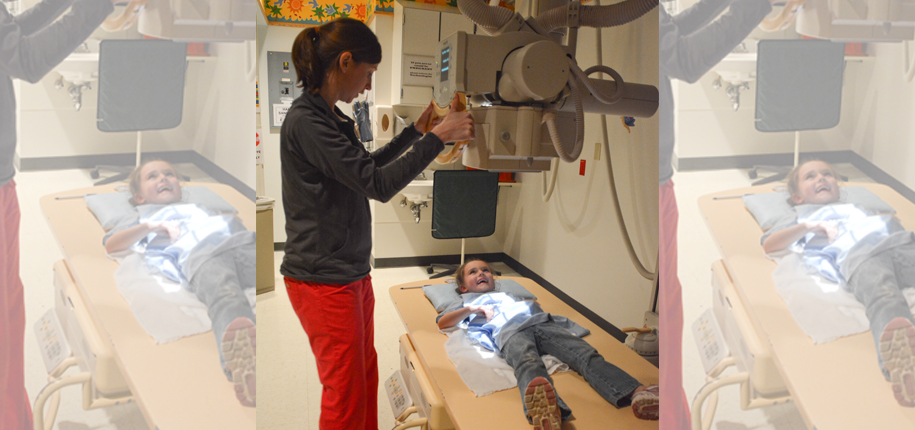
The most common tool used by a radiologist is the x-ray. X-rays help us see through the patient to diagnose certain diseases and injuries that otherwise would not be obvious to the naked eye. But what are the drawbacks? One controversy that I have seen circulating on social media is that X-rays are radiation that causes harm.
Hopefully, after reading this short blog post, you will have a better idea of the radiation risk of an x-ray so that you can be better informed if your child does need an x-ray someday.
The physics of radiation can get extremely complicated, so I will not dive into a long physics lecture; however, we do need to get a little technical.
First off, it is true that x-rays are a form of radiation that could cause injury if too much is used, both short-term and long-term. The short-term injury happens at much higher amounts than a normal x-ray. For example, it would take about 2,800 chest x-rays over a few hours to cause a mild skin burn. The long-term concern of radiation is the possible higher risk of cancer later in life. An excellent recent review of radiation-related cancer risk by Hricak et?al. stated that “organ doses in the range from 5 to 125?mSv result in a very small but statistically significant nonzero increase in cancer risk.” Therefore, about 50 chest x–rays and 5,000 hand/foot x-rays are thought to cause a “very small” increase risk of cancer.
In all honesty, I find that radiation dose and risk much easier to understand when compared to real-life examples.
Radiation is everywhere around us. It is in the air we breathe, in the food we eat, and comes from nature. Your body absorbs some of this radiation the same way it absorbs some of the radiation during an x-ray. So, let’s compare a few of the most common types of x-rays performed with some real-life comparisons.
One chest x-ray is the same as:
One hand or foot x-ray is equal to:
Everything in life has some sort of built-in risk, and medicine is no different. Physicians are constantly weighing the risks and the benefits in medicine. The goal is to diagnose and treat children in the best possible way while causing the least amount of harm. X-rays are just one helpful tool that uses low radiation to help clinicians diagnose illness and injury earlier. Earlier diagnosis often leads to earlier and better treatment, which in turn helps patients get back to normal more quickly.
In the case of an x-ray for your child, it is important to be informed why the x-ray is being done and if it is necessary for the diagnosis. If an x-ray is needed for your child in the future, I hope the above information will help ease some of the worries you may have otherwise had about the radiation exposure and subsequent risks.
Dr. Corey Matthews, author; Glenn Miñano, BFA, editor; Meredith Towbin, copyeditor